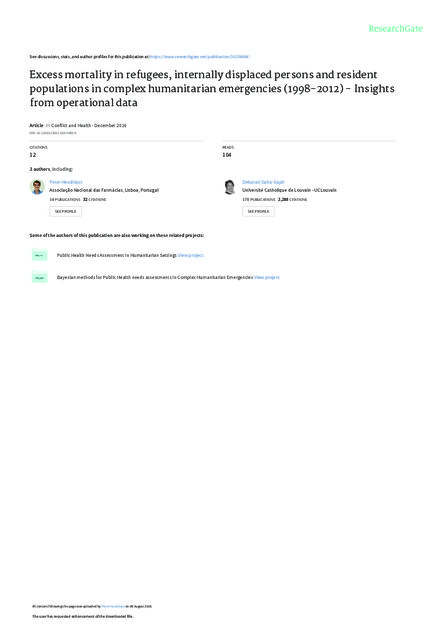
Complex humanitarian emergencies are characterised by a break-down of health systems. All-cause mortality increases and non-violent excess deaths (predominantly due to infectious diseases) have been shown to outnumber violent deaths even in exceptionally brutal conflicts. However, affected populations are very heterogeneous and refugees, internally displaced persons (IDPs) and resident (non-displaced) populations differ substantially in their access to health services. We aim to show how this translates into health outcomes by quantifying excess all-cause mortality in emergencies by displacement status.
Aid agencies report the highest excess mortality rates among IDPs, followed by resident populations. In absolute terms however, due to their high share in the total number of people at risk, residents are likely to account for most of the excess deaths in today’s emergencies. Further research is needed to clarify whether the low estimates of excess mortality in refugees are the result of successful humanitarian interventions or due to limitations of our methods and data.